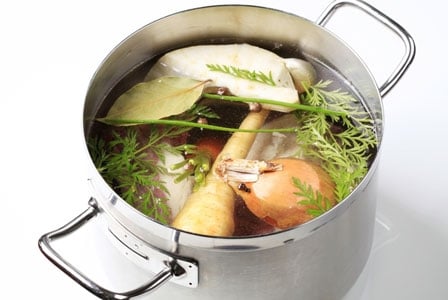
Food waste is a big problem in Canada. In cold, hard dollars, our food waste problem equates to approximately $27 billion annually.
Food waste is a big problem in Canada. In cold, hard dollars, our food waste problem equates to approximately $27 billion annually, according to a 2010 report by Value Chain Management Centre. Perhaps big is an understatement.
Worse still is that this figure represents only terminal waste—that which ends up in landfills or is composted. Waste is created throughout food processing and includes water, packaging, and human resources. When all this waste is taken into account, the impact is greater than most can imagine.
Individual food waste is equally astonishing, as the report states that over 50 percent of the $27 billion in food waste comes from Canadian households. Key reasons for food disposal include cooking too much food, letting food spoil before it’s used, and feeling unsure about using leftovers.
However, implementing a few tips at home—and being diligent—can ensure that you reduce your family’s food waste.
Take the Crisper Challenge
Done a few times per week, the Crisper Challenge can save you significant amounts of money and reduce your food waste substantially. To take the challenge, open your fridge, survey the contents, and determine what needs to be eaten immediately, what needs to be eaten in the next few days, and what’s past its prime and needs to be composted.
Plan your meals
At the beginning of each week, or even several times per week, sit down and figure out what you’re going to cook over the next few days. Be sure to incorporate any fading items you found during the Crisper Challenge, and be sure to wade through your pantry and freezer for any items you may already have on hand, so as not to purchase doubles.
Fudge it
If you’re unsure about a few items during your twice-weekly Crisper Challenge, think about this: overripe fruit is excellent in smoothies, and wilted veggies are perfect for soups and stews. Mold bad, ripe, sweet fruit good. Got it?
Get the temp right
Ensure that the seal around your fridge door is tight and free from cracks. Also, food keeps best at a temperature between 1 and 5 C, so ensure the temperature is on par.
Make use of your freezer
Produce scraps such as woody asparagus ends, onion skins, carrot peels, and herb stems can be stored in an airtight container in the freezer. When you’re in need of veggie stock for a soup or stew, throw the scraps into a pot and simmer away!
When you’ve finished cooking your delicious soup with homemade broth, pack up any leftovers you don’t plan on eating over the next few days into individual containers and store in the freezer. These make great on-the-go lunches.
Finally, if you have the problem of bread going moldy on you, store bread loaves in the freezer, and remove pieces as you need them.






